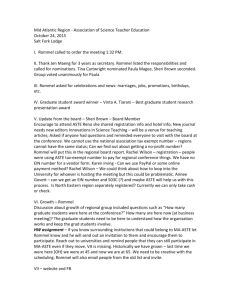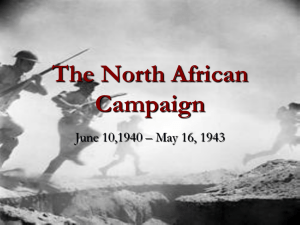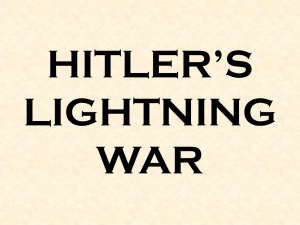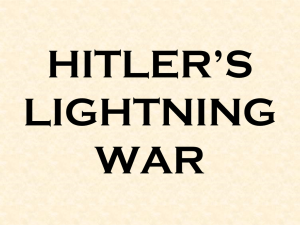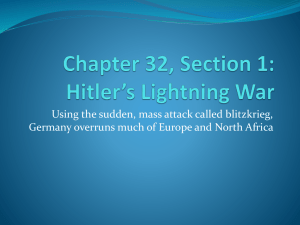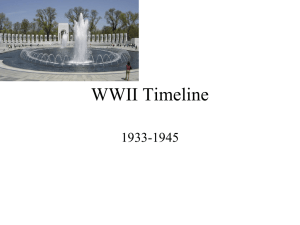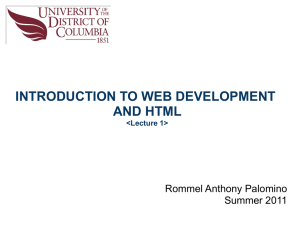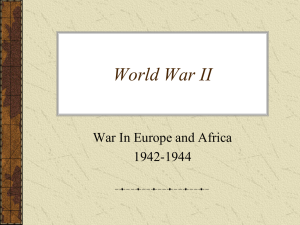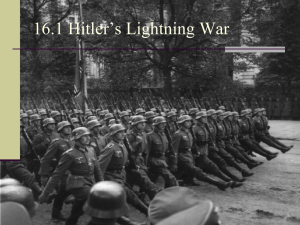in search of the desert fox text
advertisement
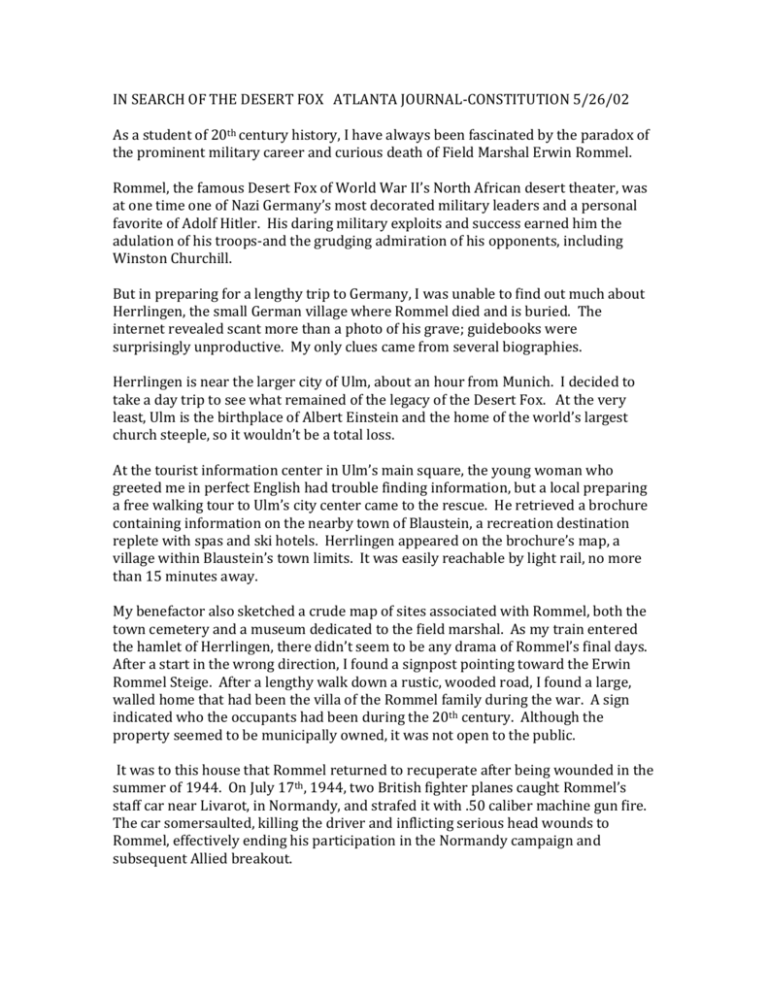
IN SEARCH OF THE DESERT FOX ATLANTA JOURNAL-CONSTITUTION 5/26/02 As a student of 20th century history, I have always been fascinated by the paradox of the prominent military career and curious death of Field Marshal Erwin Rommel. Rommel, the famous Desert Fox of World War II’s North African desert theater, was at one time one of Nazi Germany’s most decorated military leaders and a personal favorite of Adolf Hitler. His daring military exploits and success earned him the adulation of his troops-and the grudging admiration of his opponents, including Winston Churchill. But in preparing for a lengthy trip to Germany, I was unable to find out much about Herrlingen, the small German village where Rommel died and is buried. The internet revealed scant more than a photo of his grave; guidebooks were surprisingly unproductive. My only clues came from several biographies. Herrlingen is near the larger city of Ulm, about an hour from Munich. I decided to take a day trip to see what remained of the legacy of the Desert Fox. At the very least, Ulm is the birthplace of Albert Einstein and the home of the world’s largest church steeple, so it wouldn’t be a total loss. At the tourist information center in Ulm’s main square, the young woman who greeted me in perfect English had trouble finding information, but a local preparing a free walking tour to Ulm’s city center came to the rescue. He retrieved a brochure containing information on the nearby town of Blaustein, a recreation destination replete with spas and ski hotels. Herrlingen appeared on the brochure’s map, a village within Blaustein’s town limits. It was easily reachable by light rail, no more than 15 minutes away. My benefactor also sketched a crude map of sites associated with Rommel, both the town cemetery and a museum dedicated to the field marshal. As my train entered the hamlet of Herrlingen, there didn’t seem to be any drama of Rommel’s final days. After a start in the wrong direction, I found a signpost pointing toward the Erwin Rommel Steige. After a lengthy walk down a rustic, wooded road, I found a large, walled home that had been the villa of the Rommel family during the war. A sign indicated who the occupants had been during the 20th century. Although the property seemed to be municipally owned, it was not open to the public. It was to this house that Rommel returned to recuperate after being wounded in the summer of 1944. On July 17th, 1944, two British fighter planes caught Rommel’s staff car near Livarot, in Normandy, and strafed it with .50 caliber machine gun fire. The car somersaulted, killing the driver and inflicting serious head wounds to Rommel, effectively ending his participation in the Normandy campaign and subsequent Allied breakout. UNDER SUSPICION It was also here that the field marshal received word of the failure of the assassination plot to kill Hitler. A bomb placed in Hitler’s East Prussian briefing room by Col. Claus Von Stauffenberg had managed only superficial damage and precipitated the arrest and interrogation of many of Rommel’s colleagues. The subsequent investigation circumstantially implicated Rommel and added to Hitler’s growing dissatisfaction with his former favorite. Rommel’s son, Manfred, the former vice mayor of Stuttgart, has written about the tension marking these final months. Rommel was aware that he was under suspicion, especially when he noticed a nightly Gestapo presence near the entrance to the driveway. As I stood near the house, the warm sunlight, surrounding trees and bucolic silence made such a sinister presence seem impossible. There wasn’t much else to see, as the house is secluded. Down a nearby path, I could see a church steeple, but when I got closer, it was clear that the church was built recently, with no cemetery, people or information. A young woman with two small children stopped to help. Seeking Rommel’s grave, I managed the phrase, “Bitte, Friedhof Erwin Rommel?” With limited English and sign language, she politely made it clear that she would take me there herself. Back at the center of town, I discovered I’d given up a few hundred yards early. The women led me to the entrance of the cemetery and pointed to the southwest corner. At the rear of the of the small, well-maintained burial ground, Erwin Rommel is buried next to his wife Lucie, the marker shaped and painted like a large Iron Cross and carved out of wood. While there is no inscription, other than the name and date of birth and death, there are several other memorial plaques in both German and English from military units both German and Allied. UNLOCKING THE PAST My guide’s impromptu tour continued toward city hall. I’d asked about the Erwin Rommel museum and gotten another polite nod, and the unmistakable notion of a wrist turning a key in a lock. We picked up a key there and continued on our way. After a few hundred yards, we came to an older building that seemed to serve several municipal functions. The key opened the wooden front door and a second door on the first floor of the building. She left me to the solitude and exhibits detailing the life of one of the most prominent military figures in European history. The museum consists of two large rooms containing numerous framed maps, photographs, newspaper articles and paintings. Glass cases contain the general’s decorations and uniforms. One features the Iron Cross, cap and uniform worn during the French campaign of 1940. There is a plaster life mask and sand colored Afrika Korps uniform and pith helmet. Another case contains Rommel’s Pour Le Merite, the German equivalent of the Medal of Honor; Rommel earned it as a company commander in World War I, when he captured 8,000 Italian troops in a single day. There is also an extensive archive of rare books about the war in North Africa and Europe and volumes on other topics and about individuals from Rommel’s time period. Judging from the guest book, the museum didn’t receive many visitors, perhaps a couple a month, seemingly of the academic or military variety. I signed the book and picked up a roughly mimeographed biography, chronology and map of Herrlingen with additional points of interest. I locked up the building and returned the key to city hall. Unfortunately, the map was in German. Down the same road as the Rommel villa seemed to be something else of interest, marked Rommel Gedenkstein. Had I brought a German-English dictionary I would have understood that gedenkstein means memorial stone. HITLER MAKES HIS MOVE In early October 1944, Wilhelm Keitel, Hitler’s chief of staff, summoned Rommel to Berlin. Assuming the worst, Rommel begged off, explaining that his wounds did not allow for travel. A week later, on October 14, Gens. Wilhelm Burgdorf and Ernst Maisel, along with an SS escort, arrived at Rommel’s house in Herrlingen. The generals conferred privately with Rommel for a few minutes and then gave him some time alone with his family. Rommel told family members that interrogations had established that Rommel knew an attempt on Hitler’s life was imminent, his son recalled. Rommel then recounted his options and added “In fifteen minutes, I will be dead, be brave and help your mother.” He left in the generals’ staff car which proceeded two miles down the very road that I was walking on. In that place is now a giant boulder, surrounded by several large trees. A simple marble plaque is inscribed General Feldmarschall Erwin Rommel14-10-1944. Surrounded by farmlands, the location was probably chosen for its isolation from witnesses. The car stopped, Maisel and Burgdorf got out, and in the time it took for them to walk a judicious distance and smoke a cigarette, Erwin Rommel was dead. He consumed the contents of a cyanide capsule provided for the occasion. Four days later Hitler would declare a national day of mourning. A state funeral, attended by Lucie and Manfred Rommel at the cathedral in Ulm would reinforce this charade. Rommel’s death would be ascribed to the head wounds suffered in the suffered in the July car crash. The regime could not afford to identify one of its most respected generals as a member of the conspiracy, a prospect that would have fueled even greater disillusionment with Hitler. It was not until after the war that the circumstances of Rommel’s death were revealed. The long walk back to the station was certainly introspective. It is quite understandable that contemporary Germans would be reluctant to emphasize the links to Rommel or other Nazi military leaders and that today Herrlingen is today virtually unknown. I felt grateful to find a historic spot that is off of the beaten tourist path. I’ll leave the analysis to the historians.
